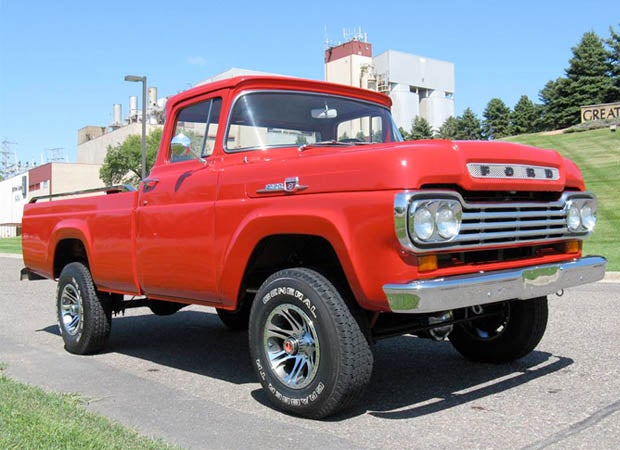
Ford Bronco
For 30 years over five generations, the Bronco plied both city streets and country trails, and it got extra fame in the �90s thanks to the Trial of the Century. It moved from a compact SUV that was meant to compete with the International Scout to a full-size SUV over the years, but some things remained consistent � such as the availability of V-8 engines and manual transmissions. There were improvements over the years, of course, such as the third-gen Bronco getting an independent front suspension. And now there are rumors that the Bronco name could come back � some great nameplates never truly fade.

Third-Generation F-Series
The third-generation of Ford�s long-running F-Series, which was built from 1956 to 1960, is key because it was the first to offer four-wheel drive as an option, which it did in 1959. It should be noted that this was the first �factory� option � previously, F-Series buyers could get four-wheel drive from a conversion kit. So while these generation trucks used either an inline-six or V-8 engine, the biggest reason this truck is on the list is that not only was this the first Ford truck to offer in-house four-wheel drive, but also the first of the Big Three automakers.

First-Generation Ford Explorer
The current Ford Explorer, while being plenty capable off-road, is probably best-known as family hauler. But the original Ford Explorer did something that went beyond what it could or couldn�t do off-road � it redefined the small/mid-size SUV segment and did more than perhaps any vehicle to drive SUVs to the sales successes they see today. Powered by a 4.0-liter V-6 and offered with four- or two-doors, the Explorer could crawl rocks but it gets its space on this list because of how it shot up the sales charts.

2009-2014 Ford Raptor
The F-150-based Raptor was a dedicated trail runner with increased performance. It offered either a 5.4-liter V-8 with 310 horsepower or a 6.2-liter V-8 with 411 horsepower. Other performance goodies included 35-inch tires, 11- and 12-inches of suspension travel front and rear, respectively. A SVT race version was also available with 500 horsepower, and it was used for the Baja 1000.

2017 Ford Raptor
The 2017 Ford Raptor isn�t a historical off-roader yet, but it will be. Ford has cut 500 pounds, added a 10-speed automatic transmission, torque on-demand transfer case, and a 450-horsepower 3.5-liter EcoBoost engine. That makes for a truck that should have no problems on even the trickiest of trails or in the harshest of deserts.


 Your Privacy Choices
Your Privacy Choices